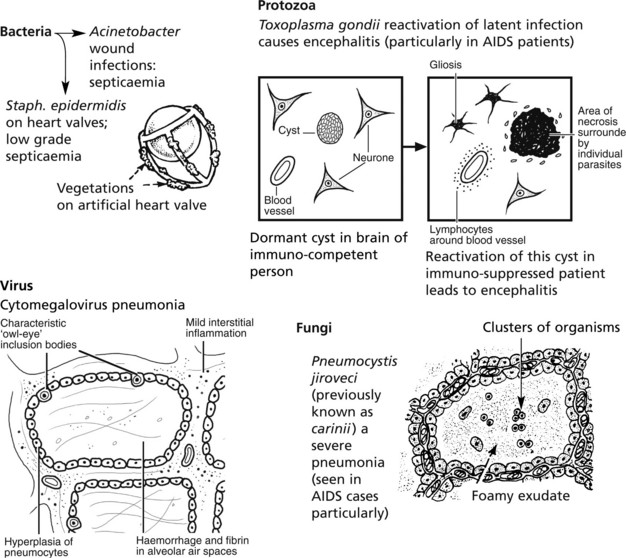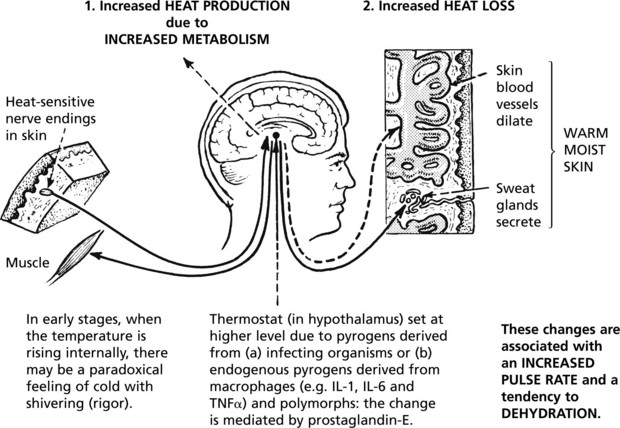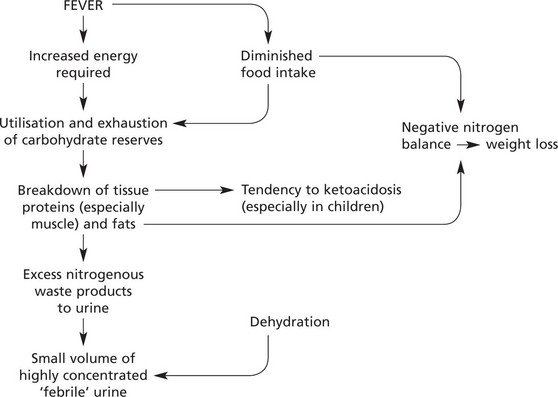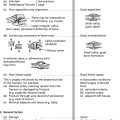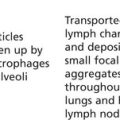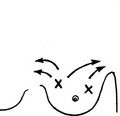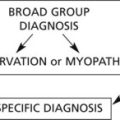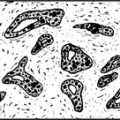Chapter 4 Infection
Infection
There are very many infections: the chapter will deal only with principles and a few examples.
| Type of Infecting Agent | Example | Example of Disease |
|---|---|---|
| BACTERIA (a very wide range) | STAPHYLOCOCCUS | ABSCESS |
| VIRUSES (a wide range) | HERPES ZOSTER | CHICKENPOX and SHINGLES |
| FUNGI (a limited range) | CANDIDA | BUCCAL and VAGINAL THRUSH |
| PROTOZOA | PLASMODIUM | MALARIA |
| Infestation with PARASITES WORMS and FLUKES | ECHINOCOCCUS GRANULOSIS | HYDATID DISEASE |
Infection and Infectious Disease
An infectious disease occurs when infection is associated with clinically manifest tissue damage.
Routes of Entry of Infecting Organisms
Chemical Action
Innate Immune Response
Factors Influencing the Course of Infection
Once infection has occurred, important defence mechanisms operate:
Examples of Failure of Protective and Defence Mechanisms
Bacteria
| Exotoxins | Endotoxins |
|---|---|
| Secreted by living bacteria | Integral part of bactrial cell wall Release on death of organism (usually Gram-negative) |
| Simple proteins | Lipid-polysaccharide complexes |
| Neutralised by specific antibody (antitoxin) | Do not stimulate antibody production |
| Many actions – Enzymes, e.g. S. aureus protease – Action on intracellular signalling, e.g. V. cholerae – Neurotoxins, e.g. C. botulinum – Superantigens, e.g. S. pyogenes |
Beneficialeffects:Inlowdosestimulatesprotectiveimmunity Harmful effects: In high dose ENDOTOXIC SHOCK – due to massive release of cytokines with activation of coagulation,fibrinolytic and complement cascades LPS binds cell surface receptor CD14 and is delivered to TLR4 that starts intracellular signalling cascade |
Sepsis Syndrome
Sepsis is a very serious condition in which there is a whole-body inflammatory state (systemic inflammatory response syndrome (SIRS)) in the presence of infection.
Acute Bacterial Infection
Pyogenic Bacteria
Note: Rheumatic fever and acute glomerulonephritis are complications of streptococcal infection in which the heart and kidneys are damaged. This is caused by disturbance in the immune mechanisms (type III hypersensitivity reaction) and is not due to the actual presence of streptococci in the heart and kidneys.
Food Poisoning
E. Coli 0157 – a commensal in cattle is a human pathogen – production of a powerful virocytotoxin is associated with the haemolytic uraemic syndrome (see p.473) and may cause death in the very young and elderly.
Gangrene
Gangrene is a complication of necrosis in which bacterial infection is superimposed. There are three main types:
Tetanus
This organism itself does not cause local tissue damage. The effects are due to a powerful endotoxin secreted by the organism. This is in contrast to the usual bacterial diseases where tissue damage is important and is due to the local bacterial action.
Method of Infection
In developing communities the umbilical stump of the newborn may be infected by faecal material.
Chronic Bacterial Infection (Granulomas)
In these infections chronic inflammation is the basic mechanism (see p.42). The detailed evolution of the inflammatory reaction is modified by several factors of which the immune response of the host is important (see p.89).
Other Mycobacterial Infections
Mycobacteria other than tubercle sometimes infect humans. They are commonly present in soil and water and are less virulent than M. tuberculosis. Most exposures do not produce disease unless there is a defect in local or systemic host defenses.
Leprosy
This slowly progressive disease which causes serious effects by damage to peripheral nerves is still widespread in the tropics and subtropics. The infection is acquired by close, prolonged contact and is due to Mycobacterium leprae, a slender acid and alcohol-fast bacillus. The disease presents in two contrasting extreme forms and with cases of intermediate type.
These differences are due in the main to differences in the immune reaction of the host.
Secondary Syphilis
During the next 2 or 3 months, the spread of the organisms throughout the body causes secondary stage effects. These are a widespread rash (pox) of varying appearance, ulceration of mucous membranes, generalised lymphadenopathy, damage to various individual organs and tissues. There are constitutional effects – particularly fever and anaemia.
Tertiary (Late) Syphilis
1. Gumma, 2. Syphilitic aortitis and 3. Neurological syphilis.
Congenital Syphilis
Transplacental infection of the fetus occurs with the following possible consequences:
Virus Infections
Virus Infections
Viruses are obligate intracellular pathogens that can replicate only by utilising the resources of the infected cell. The virus particle, or virion, consists of a central core of genetic material, either RNA or DNA, surrounded by a protein coat (capsid). In addition there may be a membranous envelope containing host and viral lipids.
In addition to this direct cytopathic effect of the virus, damage to host may also be caused by:
Acute Virus Infection
The evolution of a typical acute virus infection can be understood in terms of virus replication, release and spread within the body, and of the host’s reaction.
Latent Virus Infection
A good example is the common ‘cold sores’ of the lips and face caused by the virus Herpes simplex (an enveloped DNA virus).
Oncogenic Virus Infection
Several DNA viruses and retroviruses of the RNA family can give rise to tumours (see also p.150).
Examples include the following:
The mechanisms by which viruses cause tumours are illustrated on page 150.
Host/Virus Interaction
The reactions occurring in the host are important.
Opportunistic Infections
This term is used for infections caused by organisms which are often nonpathogenic or of low grade virulence, occurring in individuals whose resistance to infection is impaired. They are occurring more frequently in modern medical practice because of the increasing use of powerful immunosuppressive drugs.
Causes of Lowered Resistance
Infection – General Effects
The more general body reactions in infection are: fever and changes in metabolism.
Fever (Pyrexia)
Changes in Metabolism
Tissue breakdown is greatly increased, and in some infectious fevers there is a marked loss of body weight.

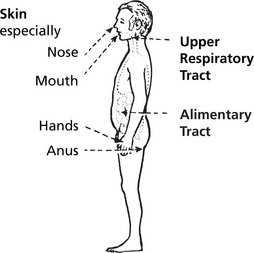
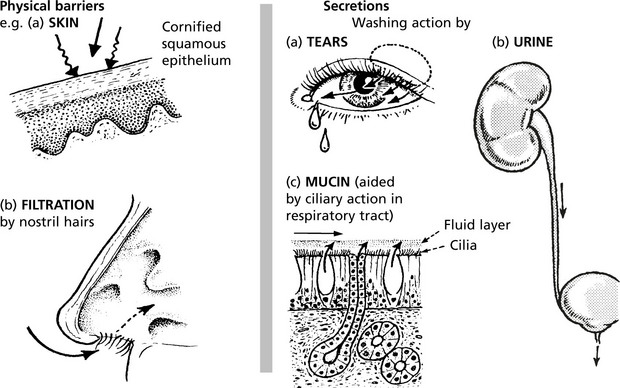
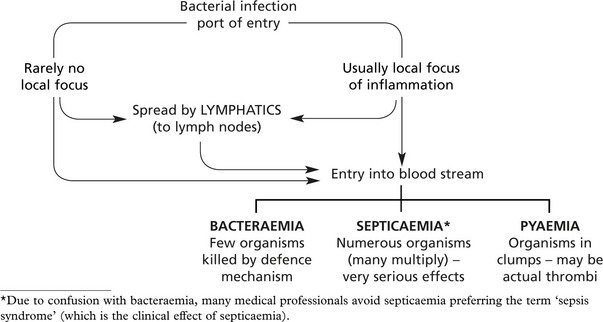
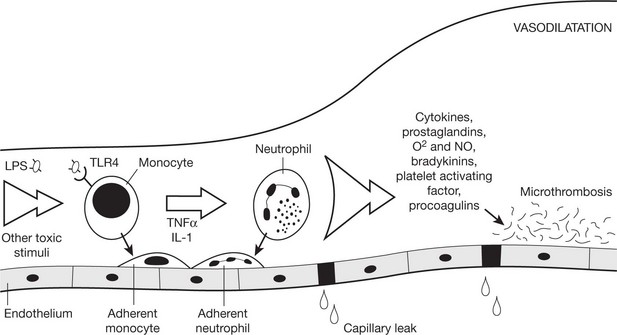
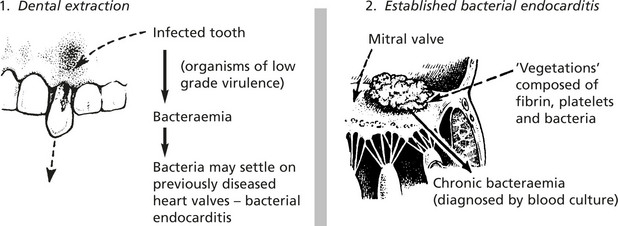
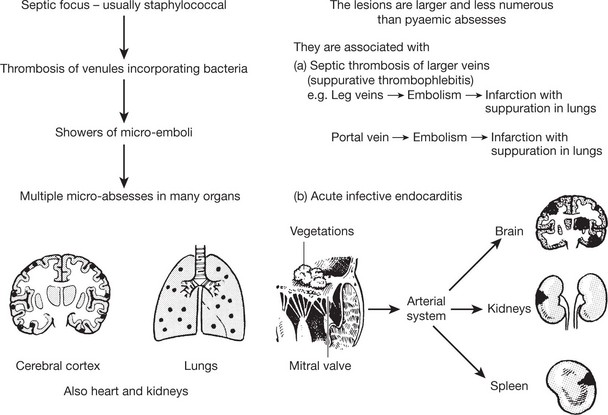

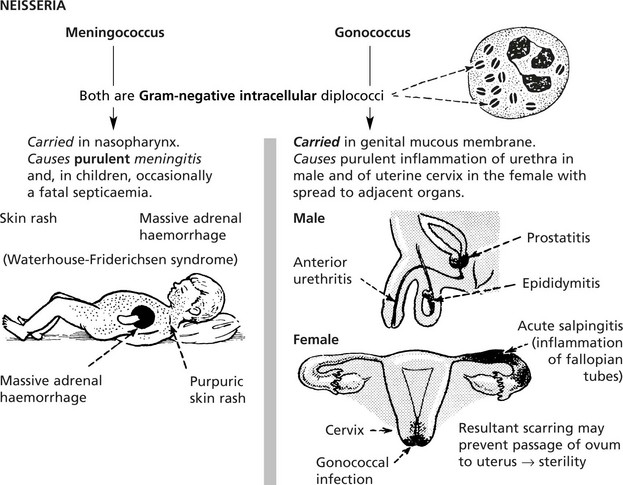
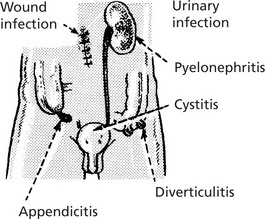
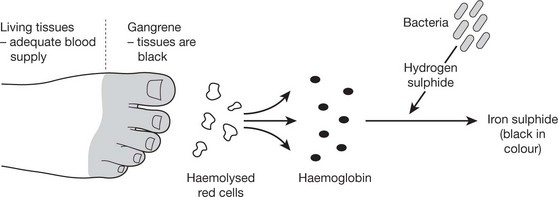

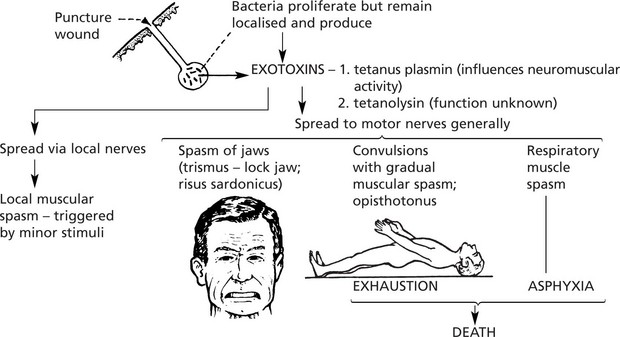
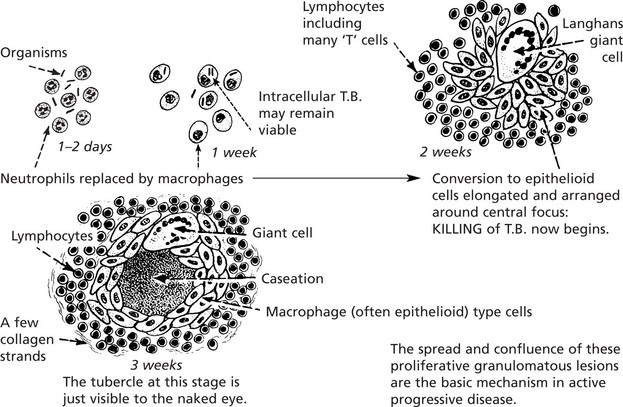

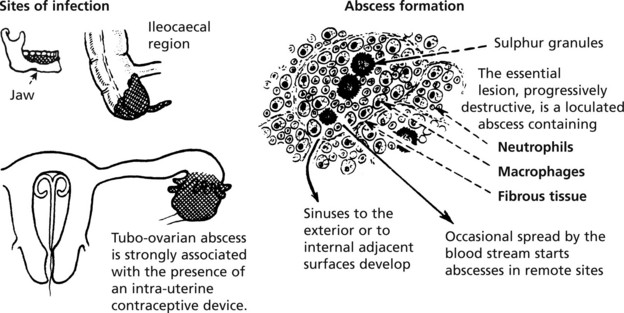

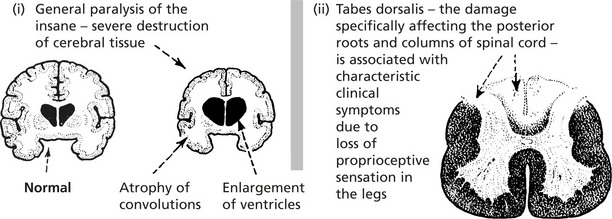
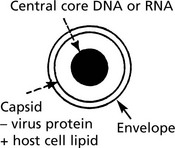
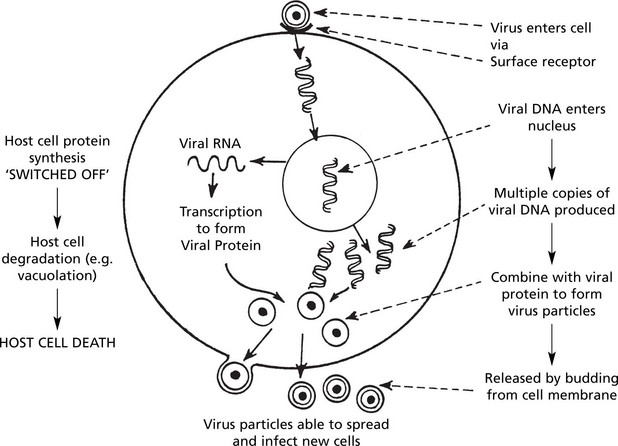
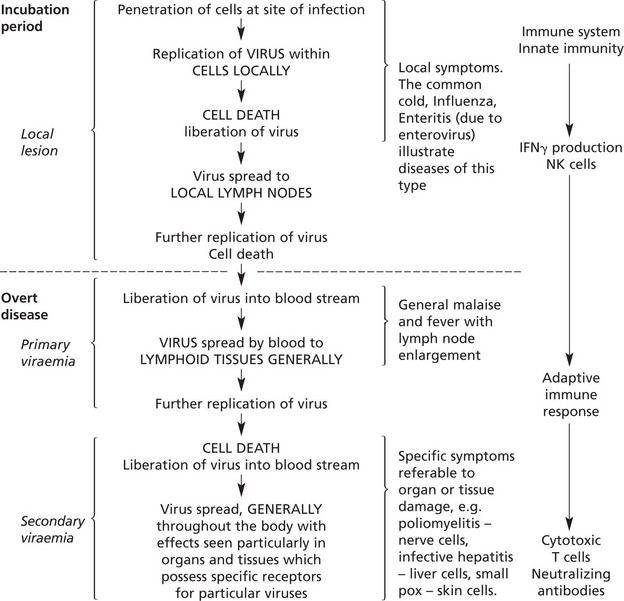
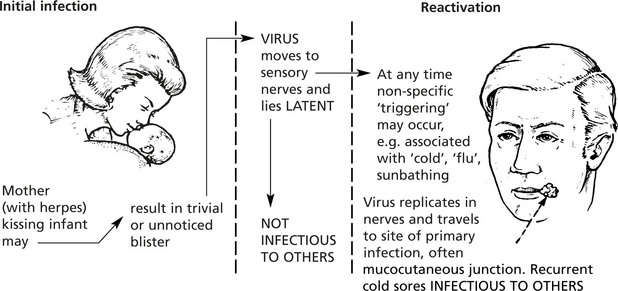
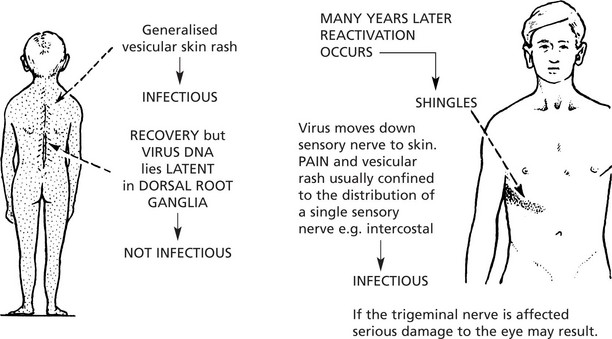

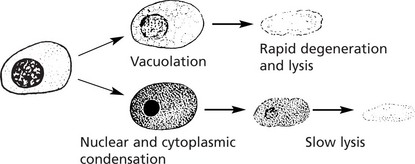



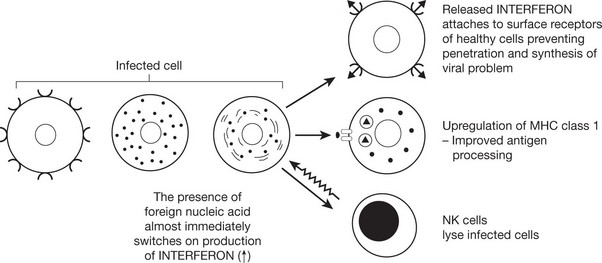
 limit initial infection via antibody-dependent cell-mediated cytotoxicity (ADCC) but are very important in protecting against
limit initial infection via antibody-dependent cell-mediated cytotoxicity (ADCC) but are very important in protecting against 